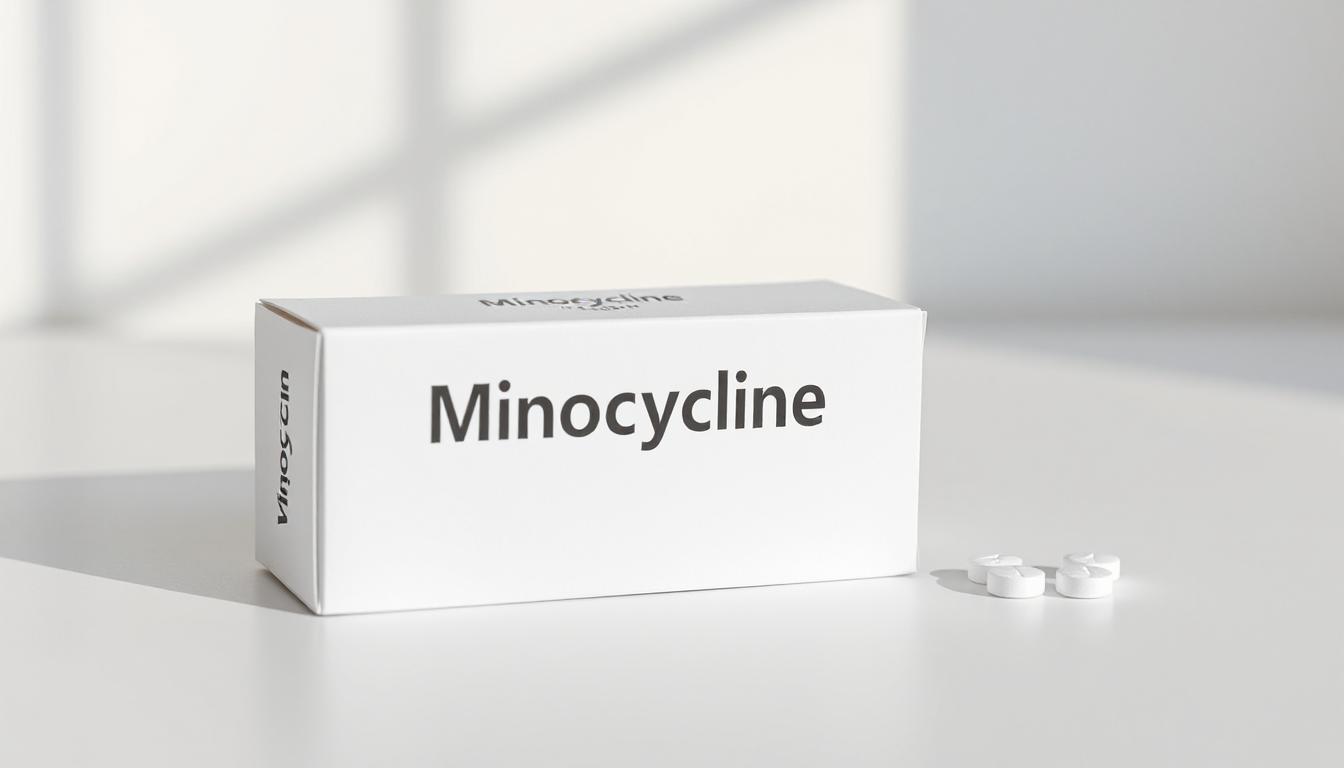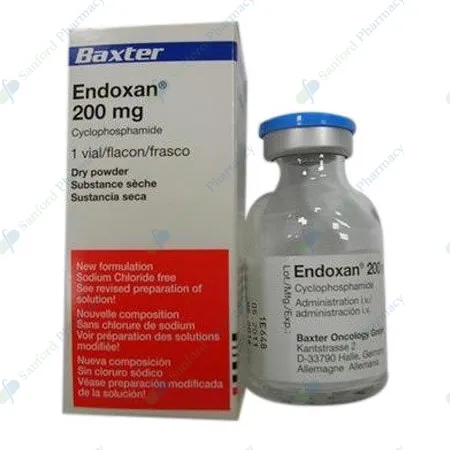Featured This Month

Gastrointestinal and Metabolic
What Is Sucralfate Used For?
 Abdullah
Abdullah
 12 Dec 2025
12 Dec 2025
Sucralfate is one of those stomach medicines people hear about, usually after dealing with an ulcer or some miserable stomach irritation, yet most folks don’t really understand what it does. It doesn’t work like the popular acid reducers — it doesn’t shut down acid pumps or neutralize anything. Doctors often pair it with those other meds because sucralfate has its own special role: it protects the raw areas so they can finally rest and heal. Think of it more like giving the injured spot a break. When your stomach or upper intestine is inflamed, every splash of acid or bile can feel like it’s scraping over the same wound. Sucralfate steps in like a protective barrier. Not glamorous, but incredibly useful when the tissue underneath needs time to repair itself. What Sucralfate Actually Is Sucralfate isn’t an acid reducer at all — not in the usual sense. Instead, it acts like a coating agent. Once it hits an irritated or damaged area, it sticks to it. Really sticks. That “bandage-like” effect is what sets it apart from other stomach meds. While most stomach medicines work through your bloodstream and regulate acid production, sucralfate 1gm tablets work mostly right where they land — inside the stomach or first part of the small intestine. That’s why people call it a protective medication rather than something that changes acid levels. It’s also the reason forms like Carafate or Carafate liquid are so popular. The liquid especially coats surfaces more evenly, which matters if the inflammation is widespread or tricky to reach. How Sucralfate Works Inside the Body Here’s the simple version: sucralfate gets activated by stomach acid. Once that happens, the medicine becomes sticky and attaches itself to ulcers or irritated patches like glue. It creates a little barrier so acid, pepsin, and bile salts can’t reach the damaged tissue as easily. By keeping the worst irritants away, the area underneath has a better chance to heal. Some key points: it forms a physical protective layer it doesn’t directly reduce stomach acid it needs stomach acid present to activate properly it stays mostly in the digestive tract and barely enters the bloodstream This is why doctors like using it even alongside PPIs — the two medications do different jobs. Main Conditions Sucralfate Is Used For 1. Stomach Ulcers Probably the most classic use. Sucralfate shields the ulcer from further irritation so the tissue can finally recover. A lot of ulcer healing depends on protection, not just reducing acid. 2. Duodenal Ulcers These ulcers sit in the first part of the small intestine, right after the stomach. Sucralfate has a way of sticking to these areas and forming that protective coating where acid tends to wash over repeatedly. 3. Gastritis or General Stomach Irritation (off-label) People with gastritis describe a burning or raw feeling. Sucralfate doesn’t cure the cause, but it often smooths things out enough to reduce the day-to-day discomfort. Many doctors use it temporarily during flare-ups. 4. GERD-Related Irritation It doesn’t stop acid reflux itself — so it’s not a GERD treatment. But if acid has already injured the esophagus, sucralfate may help protect the area while it heals. Some patients use it as-needed. 5. Mouth Sores / Radiation Sores (off-label) When turned into a liquid suspension, sucralfate can be used like a rinse. Doctors use this for painful mouth ulcers or treatment-related irritation. It coats the mouth lining in a similar “bandage-like” way. And yes, some vets use sucralfate for dogs or Carafate for dogs when pets deal with stomach irritation — also off-label, but widely practiced. Why Doctors Choose Sucralfate A few reasons: it acts locally it’s barely absorbed it avoids systemic side effects it’s safe for patients who can’t tolerate strong acid reducers it adds protection when the stomach lining feels already inflamed Sometimes it’s just the extra layer the stomach needs while other treatments do the deeper work. How Long Sucralfate Takes to Work Some people feel a soothing effect fairly quickly, especially with the liquid. But true ulcer healing takes time — weeks, sometimes longer. It also needs to be taken several times a day, which surprises patients at first. Timing matters more than people realize. How to Take Sucralfate Correctly A few key things help it work at full strength: usually taken on an empty stomach often spaced away from other meds available as a tablet or a liquid liquid tends to coat better if irritation is widespread Spacing matters because sucralfate can latch onto other medications and block their absorption. Common Side Effects (usually mild) Most people barely notice them, but the usual ones include: constipation dry mouth mild fullness or bloating Since the drug stays in the stomach rather than the bloodstream, it generally avoids heavy systemic side effects. Who Should Be Careful With Sucralfate A few groups need more caution: people with kidney disease (because it contains aluminum) anyone taking many medications — spacing doses is important patients prone to constipation Your pharmacist can help figure out timing if your schedule is packed with other meds. Drug Interactions People Should Know About This is probably the biggest issue with sucralfate. It can block absorption of several medications, including: thyroid meds certain antibiotics acid reducers seizure medications Spacing things out by about two hours usually solves the problem. If your list is long, it’s worth asking your pharmacist to help build a schedule. Frequently Asked Questions Does sucralfate heal ulcers by itself? It helps, but it works best with acid reducers. Can I take it with food? Empty stomach is better — it sticks more effectively. Why do the tablets taste chalky? That’s just how sucralfate is. The liquid tastes different but coats better. Do I still need acid meds? Often yes, depending on the cause of the ulcer. How long should someone stay on it? Short-term for most people, but it depends on what’s being treated. Practical Tips From a Pharmacy Standpoint A few things make the whole treatment smoother: take it exactly on schedule drink enough water to prevent constipation let your pharmacist check your full medication list for spacing consider the liquid if the tablet feels slow or rough on the stomach The more consistent you are with timing, the better the protective coating works. Closing Thoughts Sucralfate might not be the flashiest stomach medication out there, but when the lining of your stomach or upper intestine is irritated, it does something many meds can’t: it shields the area long enough for healing to finally begin. With proper timing, patience, and a little guidance, it can make a noticeable difference in how your stomach feels day to day.

Bacterial and Fungal Infection
Foods to Avoid When Taking Sulfamethoxazole / Trimethoprim
 Ibrahim
Ibrahim
 08 Dec 2025
08 Dec 2025
A lot of people hear the name sulfamethoxazole/trimethoprim — or SMX/TMP, or just Bactrim — and instantly think “strong antibiotic.” It’s one of the most commonly prescribed meds for UTIs, skin infections, sinus infections, and a few other things. What most people don’t hear about, though, is how food plays a role while you’re taking it. And not because food ruins the antibiotic or anything dramatic, but simply because certain foods can make the side effects worse, or make you feel more uncomfortable than you need to be. Doctors often forget to explain this part. Pharmacists see it more — people come back asking why their stomach feels off, or why they felt shaky after coffee. This guide basically breaks things down in a way that’s easy to follow, without going too technical. A Quick Look at the Medication Sulfamethoxazole-trimethoprim is a combination antibiotic that works by blocking two different steps bacteria use to grow. That’s why it’s so effective for urinary infections and some skin issues — the bacteria basically have a harder time surviving. But because it’s processed through the kidneys and can irritate the stomach in some people, food and hydration make a difference in how smoothly the medication goes. Why Certain Foods Can Be a Problem It’s not that foods destroy the antibiotic. The issue is more about how you feel while taking it and how your body handles it. Some foods: slow down absorption worsen nausea increase sunlight sensitivity change potassium levels, which SMX/TMP already affects Nothing here is meant to scare — it’s more about avoiding discomfort or unnecessary risks. Foods to Avoid or Limit While Taking Sulfamethoxazole / Trimethoprim 1. Alcohol — probably the biggest thing to avoid People don’t always realize this, but alcohol and SMX/TMP don’t mix well. It won’t cause the severe reaction associated with metronidazole, but still: nausea gets worse dehydration gets worse liver stress goes up side effects feel stronger It’s honestly just better to skip drinks until the treatment is done. Even one or two can make the next dose feel rougher. 2. Excessive Caffeine (coffee, strong tea, energy drinks) Most people don’t need to quit caffeine completely. But SMX/TMP slows down how your body clears caffeine, so suddenly your usual cup can feel like two or three. Possible effects: jittery feeling faster heartbeat trouble sleeping mild anxiety A cup or two is usually fine. Just don’t chase it with energy drinks or a giant iced coffee. 3. High-Sugar Foods — especially during a UTI Sugar doesn’t cancel out the antibiotic, but it does irritate the bladder and may help bacteria hold on longer. When treating a UTI, loading up on sweets isn’t the best idea. Examples: soda pastries candy sugary juices Water, bro — water is your best friend during a UTI. 4. Foods High in Potassium This one surprises almost everyone. SMX/TMP can raise potassium levels, especially in people with kidney issues or those taking certain other meds. Foods high in potassium aren’t banned — you just don’t want to eat huge amounts daily. High-potassium foods include: bananas avocados coconut water potatoes tomatoes and tomato soup spinach If you're eating these in normal amounts, it's fine. Just avoid overdoing it. 5. Very Acidic Foods (if your stomach feels sensitive) Certain foods don’t interfere with the antibiotic itself, but they do interfere with your comfort level. If the medicine is already causing nausea, acidic foods can make that worse. Things like: oranges lemon juice pineapple vinegar-heavy dressings This depends on the person. Some barely notice anything; others feel it right away. 6. Foods That Are Tough on the Stomach SMX/TMP occasionally irritates the stomach lining. Eating heavy or greasy meals at the same time doesn’t help. You might not vomit or anything, but you may feel off. Foods that often cause issues: fried takeout spicy curries really heavy pasta dishes giant meals when you’re already queasy Light, simple meals work better while you're on the antibiotic. Hydration Is Actually More Important Than Any Specific Food A lot of people don’t realize that sulfamethoxazole/trimethoprim needs good hydration to move safely through the kidneys. Proper hydration: protects the kidneys lowers the risk of crystals forming in urine makes nausea less intense helps with UTI recovery Not complicated — just drink more water than usual for the time you’re taking it. Foods That Are Actually Helpful While avoiding certain foods helps, a few choices can actually make the course easier: yogurt or probiotics (take them at a different time from the medication) rice, toast, mild cereals baked chicken or other lean proteins berries or apples broth-based soups lots of fluids These tend to sit gently on the stomach and support gut balance. What If Someone Eats These “Avoid” Foods by Accident? Nothing dramatic usually happens. Most of these aren’t dangerous interactions — they just affect comfort or potassium levels. The biggest real concern is: high-potassium foods plus kidney issues dehydration plus SMX/TMP If you suddenly feel strange — irregular heartbeat, muscle weakness, or severe fatigue — that’s worth checking out. Who Needs to Be Extra Careful With Food Interactions? Some groups have a higher chance of side effects: people with chronic kidney problems older adults anyone taking ACE inhibitors or ARBs (blood pressure meds that also raise potassium) those prone to dehydration These patients should follow food guidelines more closely. Common Questions People Ask Can I drink coffee?Yes, just don’t overload on it. Is one beer okay?Better to avoid alcohol completely until the antibiotic is done. Do bananas really matter?Only if you eat several a day or have kidney issues. What should I eat if I feel nauseous?Try lighter foods — toast, rice, bananas (just not too many), broth. Can I take probiotics at the same time?Yes, but take them a few hours away from the antibiotic. Practical Tips From a Pharmacy Perspective Pharmacists see the same patterns again and again, so the advice is simple: small meals instead of big ones steady water throughout the day avoid huge potassium-loaded smoothies be cautious with caffeine mention all medications you’re taking finish the full sulfamethoxazole-trimethoprim 800-160 mg tablet course Even little adjustments can make the experience much smoother. Wrapping It Up Sulfamethoxazole/trimethoprim is a strong and dependable antibiotic, but side effects hit harder when diet choices don’t match what your body needs during treatment. You don’t need a strict food ban list — just basic awareness so the medication can do its job without making you feel worse. When in doubt, a pharmacist can usually explain whether a food reaction, a new symptom, or a weird feeling is part of the antibiotic or something unrelated. Simple guidance goes a long way with this medication.

Gastrointestinal and Metabolic
What Is Rifaximin Used For?
 Aden
Aden
 05 Dec 2025
05 Dec 2025
Rifaximin has become one of those medications people start hearing about more once they get into the world of digestive issues. A lot of folks first come across it when their doctor brings up IBS, especially IBS-D, and suddenly this antibiotic shows up in the conversation even though it doesn’t act like the traditional antibiotics used for sinus infections or pneumonia. Rifaximin works in a very different way — almost entirely inside the gut — which is probably why it’s grown so much in popularity these past years. Doctors like using something that helps without flooding the whole body, and patients usually handle it pretty well. It’s also kind of interesting that people tend to think of it only as an “IBS antibiotic,” but rifaximin actually has a few separate identities depending on the dose and the condition being treated. What Rifaximin Actually Is Rifaximin is an antibiotic, yes, but not the kind that spreads through your bloodstream. It stays mostly in the intestine, barely getting absorbed at all. That’s what makes it different from the usual antibiotics people take for infections. Most of them enter the bloodstream and travel everywhere. Rifaximin basically sits right where the problem is — the gut — and does its job without affecting the rest of the body very much. This low absorption is one of the reasons doctors feel more comfortable using it for chronic digestive conditions. It doesn’t hit the liver or kidneys the way other meds might, and because it doesn’t circulate widely, it tends to have fewer of the old-school antibiotic side effects. How Rifaximin Works in the Body Rifaximin reduces certain bacteria that live in the intestines — not wiping everything out, but lowering the excess that contributes to symptoms like bloating, loose stools, pain, or even the toxin buildup seen in liver disease. Its effect is pretty local. It calms things down in the gut, which can create a noticeable shift in digestion for the people who respond well to it. Because it stays inside the intestine, rifaximin helps restore balance without disturbing the whole system. This is probably why patients often tolerate rifaximin 550 mg or other doses more easily compared to medicines that circulate throughout the body. Main Conditions Rifaximin Is Used For IBS-D (Irritable Bowel Syndrome with Diarrhea) This is the use people know best. Rifaximin helps reduce: urgency bloating cramping watery or frequent stools For some people, rifaximin gives weeks or months of relief. It’s not usually a permanent fix, but many patients describe it as a break from symptoms. Traveler’s Diarrhea If someone picks up E. coli while traveling, rifaximin can help shorten the illness. This use tends to be short-term and straightforward. Hepatic Encephalopathy (HE) This is a much more serious condition. People with advanced liver disease can build up toxins that affect the brain. Rifaximin helps lower those gut toxins, and when used together with lactulose, it helps keep patients more stable. This is often a long-term therapy and where rifaximin 550 mg is commonly used. Additional Off-Label Uses Doctors sometimes use rifaximin in situations that aren’t officially approved but make sense based on how the drug behaves. Small intestinal bacterial overgrowth (SIBO) is probably the most talked-about one. recurrent bloating certain chronic digestive conditions sometimes combined with other antibiotics for stubborn SIBO cases These aren’t formal FDA-approved uses, but many specialists rely on rifaximin because it tends to work without causing widespread side effects. Why Doctors Choose Rifaximin Over Other Antibiotics A big reason is safety. Since rifaximin stays in the gut, it: has fewer interactions doesn’t disturb the gut microbiome as harshly doesn’t usually cause yeast infections or major GI upset can be repeated in several courses if symptoms return Rifaximin is one of the only antibiotics where long-term or repeat therapy is considered fairly safe for certain conditions. How Long Rifaximin Takes to Work It depends on why you’re taking it. IBS-D: changes usually start around week one, sometimes week two Traveler’s diarrhea: relief can show up in 24–48 hours Hepatic encephalopathy: it works more like maintenance — keeping symptoms from worsening over time Some people feel nothing for a few days and then suddenly notice their digestion is calmer. Who Should Avoid or Be Cautious With Rifaximin Even though rifaximin is pretty safe, a few groups need caution: people with severe liver impairment patients allergic to rifamycin drugs (like rifampin) anyone who needs treatment for infections outside the gut — rifaximin won’t work for those It isn’t designed to treat sinus infections, pneumonia, UTIs, or anything outside the intestines because it never really enters the bloodstream. Common Side Effects (Usually Mild) Most people don’t experience much trouble with rifaximin side effects, but occasionally they notice: mild stomach discomfort gas or bloating headache fatigue Since the medication doesn’t travel everywhere in the body, side effects tend to be less intense compared to older antibiotics. Drug Interactions Rifaximin doesn’t interact with many medications, but there are still things to stay aware of, especially in patients with hepatic encephalopathy who may be taking multiple drugs. And anyone with a rifamycin allergy shouldn’t use it. Rifaximin in Long-Term Gut Conditions IBS-D can be stubborn. That’s why rifaximin sometimes needs repeat courses. The gut bacteria rebalance for a period, and then symptoms return. When that happens, many providers will pair medication with lifestyle adjustments — things like a low-FODMAP diet or changes in fiber intake. Questions People Commonly Ask Does rifaximin cure IBS-D permanently?No, but it can offer very meaningful breaks from symptoms. Can I drink alcohol?Moderate drinking usually isn’t a major issue, but heavy drinking can worsen digestive symptoms. Why is rifaximin so expensive?Because it’s a brand-name medication in many countries. Costs vary depending on availability and the version — like rifagut, rifagut 550, rifagut 400, or rifagut 200 in some markets. Is it safe to repeat it more than once a year?Often yes, depending on the condition. Doctors repeat it for IBS-D and SIBO fairly often. Does it help constipation-type IBS?Not usually. It’s mostly for diarrhea-predominant IBS. Patient Tips From a Pharmacy Perspective take it exactly as your doctor outlines don’t skip doses; it weakens the effect finish the full course track your symptoms after the treatment — it helps guide future decisions ask your pharmacist how it fits with your other medications Pharmacists often catch small details that make the treatment smoother. Closing Thoughts Rifaximin is unusual — in a good way. It’s an antibiotic designed mainly to work inside the gut, not all over the body. That makes it incredibly useful for certain gut disorders like IBS-D, traveler’s diarrhea, and hepatic encephalopathy. It’s one of the few antibiotics that can help with problems that aren’t classic infections, which is why doctors rely on it so much. If someone is unsure whether rifaximin is the right fit, a pharmacist can walk through the symptoms, the dose, and possible alternatives. With conditions like IBS-D or SIBO, that guidance makes a big difference in how well the treatment works.

What Is Sucralfate Used For?
 Abdullah
|
Abdullah
|
 12 Dec 2025
12 Dec 2025

Foods to Avoid When Taking Sulfamethoxazole / Trimethoprim
 Ibrahim
|
Ibrahim
|
 08 Dec 2025
08 Dec 2025

What Is Rifaximin Used For?
 Aden
|
Aden
|
 05 Dec 2025
05 Dec 2025

What is Minocycline?
 Tina
|
Tina
|
 12 Dec 2025
12 Dec 2025

How Long Does Levofloxacin Stay in Your System
 Annette
|
Annette
|
 25 Nov 2025
25 Nov 2025
Recently Posted

Gastrointestinal and Metabolic
What Is Sucralfate Used For?
 Abdullah
Abdullah
 12 Dec 2025
12 Dec 2025
Sucralfate is one of those stomach medicines people hear about, usually after dealing with an ulcer or some miserable stomach irritation, yet most folks don’t really understand what it does. It doesn’t work like the popular acid reducers — it doesn’t shut down acid pumps or neutralize anything. Doctors often pair it with those other meds because sucralfate has its own special role: it protects the raw areas so they can finally rest and heal. Think of it more like giving the injured spot a break. When your stomach or upper intestine is inflamed, every splash of acid or bile can feel like it’s scraping over the same wound. Sucralfate steps in like a protective barrier. Not glamorous, but incredibly useful when the tissue underneath needs time to repair itself. What Sucralfate Actually Is Sucralfate isn’t an acid reducer at all — not in the usual sense. Instead, it acts like a coating agent. Once it hits an irritated or damaged area, it sticks to it. Really sticks. That “bandage-like” effect is what sets it apart from other stomach meds. While most stomach medicines work through your bloodstream and regulate acid production, sucralfate 1gm tablets work mostly right where they land — inside the stomach or first part of the small intestine. That’s why people call it a protective medication rather than something that changes acid levels. It’s also the reason forms like Carafate or Carafate liquid are so popular. The liquid especially coats surfaces more evenly, which matters if the inflammation is widespread or tricky to reach. How Sucralfate Works Inside the Body Here’s the simple version: sucralfate gets activated by stomach acid. Once that happens, the medicine becomes sticky and attaches itself to ulcers or irritated patches like glue. It creates a little barrier so acid, pepsin, and bile salts can’t reach the damaged tissue as easily. By keeping the worst irritants away, the area underneath has a better chance to heal. Some key points: it forms a physical protective layer it doesn’t directly reduce stomach acid it needs stomach acid present to activate properly it stays mostly in the digestive tract and barely enters the bloodstream This is why doctors like using it even alongside PPIs — the two medications do different jobs. Main Conditions Sucralfate Is Used For 1. Stomach Ulcers Probably the most classic use. Sucralfate shields the ulcer from further irritation so the tissue can finally recover. A lot of ulcer healing depends on protection, not just reducing acid. 2. Duodenal Ulcers These ulcers sit in the first part of the small intestine, right after the stomach. Sucralfate has a way of sticking to these areas and forming that protective coating where acid tends to wash over repeatedly. 3. Gastritis or General Stomach Irritation (off-label) People with gastritis describe a burning or raw feeling. Sucralfate doesn’t cure the cause, but it often smooths things out enough to reduce the day-to-day discomfort. Many doctors use it temporarily during flare-ups. 4. GERD-Related Irritation It doesn’t stop acid reflux itself — so it’s not a GERD treatment. But if acid has already injured the esophagus, sucralfate may help protect the area while it heals. Some patients use it as-needed. 5. Mouth Sores / Radiation Sores (off-label) When turned into a liquid suspension, sucralfate can be used like a rinse. Doctors use this for painful mouth ulcers or treatment-related irritation. It coats the mouth lining in a similar “bandage-like” way. And yes, some vets use sucralfate for dogs or Carafate for dogs when pets deal with stomach irritation — also off-label, but widely practiced. Why Doctors Choose Sucralfate A few reasons: it acts locally it’s barely absorbed it avoids systemic side effects it’s safe for patients who can’t tolerate strong acid reducers it adds protection when the stomach lining feels already inflamed Sometimes it’s just the extra layer the stomach needs while other treatments do the deeper work. How Long Sucralfate Takes to Work Some people feel a soothing effect fairly quickly, especially with the liquid. But true ulcer healing takes time — weeks, sometimes longer. It also needs to be taken several times a day, which surprises patients at first. Timing matters more than people realize. How to Take Sucralfate Correctly A few key things help it work at full strength: usually taken on an empty stomach often spaced away from other meds available as a tablet or a liquid liquid tends to coat better if irritation is widespread Spacing matters because sucralfate can latch onto other medications and block their absorption. Common Side Effects (usually mild) Most people barely notice them, but the usual ones include: constipation dry mouth mild fullness or bloating Since the drug stays in the stomach rather than the bloodstream, it generally avoids heavy systemic side effects. Who Should Be Careful With Sucralfate A few groups need more caution: people with kidney disease (because it contains aluminum) anyone taking many medications — spacing doses is important patients prone to constipation Your pharmacist can help figure out timing if your schedule is packed with other meds. Drug Interactions People Should Know About This is probably the biggest issue with sucralfate. It can block absorption of several medications, including: thyroid meds certain antibiotics acid reducers seizure medications Spacing things out by about two hours usually solves the problem. If your list is long, it’s worth asking your pharmacist to help build a schedule. Frequently Asked Questions Does sucralfate heal ulcers by itself? It helps, but it works best with acid reducers. Can I take it with food? Empty stomach is better — it sticks more effectively. Why do the tablets taste chalky? That’s just how sucralfate is. The liquid tastes different but coats better. Do I still need acid meds? Often yes, depending on the cause of the ulcer. How long should someone stay on it? Short-term for most people, but it depends on what’s being treated. Practical Tips From a Pharmacy Standpoint A few things make the whole treatment smoother: take it exactly on schedule drink enough water to prevent constipation let your pharmacist check your full medication list for spacing consider the liquid if the tablet feels slow or rough on the stomach The more consistent you are with timing, the better the protective coating works. Closing Thoughts Sucralfate might not be the flashiest stomach medication out there, but when the lining of your stomach or upper intestine is irritated, it does something many meds can’t: it shields the area long enough for healing to finally begin. With proper timing, patience, and a little guidance, it can make a noticeable difference in how your stomach feels day to day.

Bacterial and Fungal Infection
Foods to Avoid When Taking Sulfamethoxazole / Trimethoprim
 Ibrahim
Ibrahim
 08 Dec 2025
08 Dec 2025
A lot of people hear the name sulfamethoxazole/trimethoprim — or SMX/TMP, or just Bactrim — and instantly think “strong antibiotic.” It’s one of the most commonly prescribed meds for UTIs, skin infections, sinus infections, and a few other things. What most people don’t hear about, though, is how food plays a role while you’re taking it. And not because food ruins the antibiotic or anything dramatic, but simply because certain foods can make the side effects worse, or make you feel more uncomfortable than you need to be. Doctors often forget to explain this part. Pharmacists see it more — people come back asking why their stomach feels off, or why they felt shaky after coffee. This guide basically breaks things down in a way that’s easy to follow, without going too technical. A Quick Look at the Medication Sulfamethoxazole-trimethoprim is a combination antibiotic that works by blocking two different steps bacteria use to grow. That’s why it’s so effective for urinary infections and some skin issues — the bacteria basically have a harder time surviving. But because it’s processed through the kidneys and can irritate the stomach in some people, food and hydration make a difference in how smoothly the medication goes. Why Certain Foods Can Be a Problem It’s not that foods destroy the antibiotic. The issue is more about how you feel while taking it and how your body handles it. Some foods: slow down absorption worsen nausea increase sunlight sensitivity change potassium levels, which SMX/TMP already affects Nothing here is meant to scare — it’s more about avoiding discomfort or unnecessary risks. Foods to Avoid or Limit While Taking Sulfamethoxazole / Trimethoprim 1. Alcohol — probably the biggest thing to avoid People don’t always realize this, but alcohol and SMX/TMP don’t mix well. It won’t cause the severe reaction associated with metronidazole, but still: nausea gets worse dehydration gets worse liver stress goes up side effects feel stronger It’s honestly just better to skip drinks until the treatment is done. Even one or two can make the next dose feel rougher. 2. Excessive Caffeine (coffee, strong tea, energy drinks) Most people don’t need to quit caffeine completely. But SMX/TMP slows down how your body clears caffeine, so suddenly your usual cup can feel like two or three. Possible effects: jittery feeling faster heartbeat trouble sleeping mild anxiety A cup or two is usually fine. Just don’t chase it with energy drinks or a giant iced coffee. 3. High-Sugar Foods — especially during a UTI Sugar doesn’t cancel out the antibiotic, but it does irritate the bladder and may help bacteria hold on longer. When treating a UTI, loading up on sweets isn’t the best idea. Examples: soda pastries candy sugary juices Water, bro — water is your best friend during a UTI. 4. Foods High in Potassium This one surprises almost everyone. SMX/TMP can raise potassium levels, especially in people with kidney issues or those taking certain other meds. Foods high in potassium aren’t banned — you just don’t want to eat huge amounts daily. High-potassium foods include: bananas avocados coconut water potatoes tomatoes and tomato soup spinach If you're eating these in normal amounts, it's fine. Just avoid overdoing it. 5. Very Acidic Foods (if your stomach feels sensitive) Certain foods don’t interfere with the antibiotic itself, but they do interfere with your comfort level. If the medicine is already causing nausea, acidic foods can make that worse. Things like: oranges lemon juice pineapple vinegar-heavy dressings This depends on the person. Some barely notice anything; others feel it right away. 6. Foods That Are Tough on the Stomach SMX/TMP occasionally irritates the stomach lining. Eating heavy or greasy meals at the same time doesn’t help. You might not vomit or anything, but you may feel off. Foods that often cause issues: fried takeout spicy curries really heavy pasta dishes giant meals when you’re already queasy Light, simple meals work better while you're on the antibiotic. Hydration Is Actually More Important Than Any Specific Food A lot of people don’t realize that sulfamethoxazole/trimethoprim needs good hydration to move safely through the kidneys. Proper hydration: protects the kidneys lowers the risk of crystals forming in urine makes nausea less intense helps with UTI recovery Not complicated — just drink more water than usual for the time you’re taking it. Foods That Are Actually Helpful While avoiding certain foods helps, a few choices can actually make the course easier: yogurt or probiotics (take them at a different time from the medication) rice, toast, mild cereals baked chicken or other lean proteins berries or apples broth-based soups lots of fluids These tend to sit gently on the stomach and support gut balance. What If Someone Eats These “Avoid” Foods by Accident? Nothing dramatic usually happens. Most of these aren’t dangerous interactions — they just affect comfort or potassium levels. The biggest real concern is: high-potassium foods plus kidney issues dehydration plus SMX/TMP If you suddenly feel strange — irregular heartbeat, muscle weakness, or severe fatigue — that’s worth checking out. Who Needs to Be Extra Careful With Food Interactions? Some groups have a higher chance of side effects: people with chronic kidney problems older adults anyone taking ACE inhibitors or ARBs (blood pressure meds that also raise potassium) those prone to dehydration These patients should follow food guidelines more closely. Common Questions People Ask Can I drink coffee?Yes, just don’t overload on it. Is one beer okay?Better to avoid alcohol completely until the antibiotic is done. Do bananas really matter?Only if you eat several a day or have kidney issues. What should I eat if I feel nauseous?Try lighter foods — toast, rice, bananas (just not too many), broth. Can I take probiotics at the same time?Yes, but take them a few hours away from the antibiotic. Practical Tips From a Pharmacy Perspective Pharmacists see the same patterns again and again, so the advice is simple: small meals instead of big ones steady water throughout the day avoid huge potassium-loaded smoothies be cautious with caffeine mention all medications you’re taking finish the full sulfamethoxazole-trimethoprim 800-160 mg tablet course Even little adjustments can make the experience much smoother. Wrapping It Up Sulfamethoxazole/trimethoprim is a strong and dependable antibiotic, but side effects hit harder when diet choices don’t match what your body needs during treatment. You don’t need a strict food ban list — just basic awareness so the medication can do its job without making you feel worse. When in doubt, a pharmacist can usually explain whether a food reaction, a new symptom, or a weird feeling is part of the antibiotic or something unrelated. Simple guidance goes a long way with this medication.

Gastrointestinal and Metabolic
What Is Rifaximin Used For?
 Aden
Aden
 05 Dec 2025
05 Dec 2025
Rifaximin has become one of those medications people start hearing about more once they get into the world of digestive issues. A lot of folks first come across it when their doctor brings up IBS, especially IBS-D, and suddenly this antibiotic shows up in the conversation even though it doesn’t act like the traditional antibiotics used for sinus infections or pneumonia. Rifaximin works in a very different way — almost entirely inside the gut — which is probably why it’s grown so much in popularity these past years. Doctors like using something that helps without flooding the whole body, and patients usually handle it pretty well. It’s also kind of interesting that people tend to think of it only as an “IBS antibiotic,” but rifaximin actually has a few separate identities depending on the dose and the condition being treated. What Rifaximin Actually Is Rifaximin is an antibiotic, yes, but not the kind that spreads through your bloodstream. It stays mostly in the intestine, barely getting absorbed at all. That’s what makes it different from the usual antibiotics people take for infections. Most of them enter the bloodstream and travel everywhere. Rifaximin basically sits right where the problem is — the gut — and does its job without affecting the rest of the body very much. This low absorption is one of the reasons doctors feel more comfortable using it for chronic digestive conditions. It doesn’t hit the liver or kidneys the way other meds might, and because it doesn’t circulate widely, it tends to have fewer of the old-school antibiotic side effects. How Rifaximin Works in the Body Rifaximin reduces certain bacteria that live in the intestines — not wiping everything out, but lowering the excess that contributes to symptoms like bloating, loose stools, pain, or even the toxin buildup seen in liver disease. Its effect is pretty local. It calms things down in the gut, which can create a noticeable shift in digestion for the people who respond well to it. Because it stays inside the intestine, rifaximin helps restore balance without disturbing the whole system. This is probably why patients often tolerate rifaximin 550 mg or other doses more easily compared to medicines that circulate throughout the body. Main Conditions Rifaximin Is Used For IBS-D (Irritable Bowel Syndrome with Diarrhea) This is the use people know best. Rifaximin helps reduce: urgency bloating cramping watery or frequent stools For some people, rifaximin gives weeks or months of relief. It’s not usually a permanent fix, but many patients describe it as a break from symptoms. Traveler’s Diarrhea If someone picks up E. coli while traveling, rifaximin can help shorten the illness. This use tends to be short-term and straightforward. Hepatic Encephalopathy (HE) This is a much more serious condition. People with advanced liver disease can build up toxins that affect the brain. Rifaximin helps lower those gut toxins, and when used together with lactulose, it helps keep patients more stable. This is often a long-term therapy and where rifaximin 550 mg is commonly used. Additional Off-Label Uses Doctors sometimes use rifaximin in situations that aren’t officially approved but make sense based on how the drug behaves. Small intestinal bacterial overgrowth (SIBO) is probably the most talked-about one. recurrent bloating certain chronic digestive conditions sometimes combined with other antibiotics for stubborn SIBO cases These aren’t formal FDA-approved uses, but many specialists rely on rifaximin because it tends to work without causing widespread side effects. Why Doctors Choose Rifaximin Over Other Antibiotics A big reason is safety. Since rifaximin stays in the gut, it: has fewer interactions doesn’t disturb the gut microbiome as harshly doesn’t usually cause yeast infections or major GI upset can be repeated in several courses if symptoms return Rifaximin is one of the only antibiotics where long-term or repeat therapy is considered fairly safe for certain conditions. How Long Rifaximin Takes to Work It depends on why you’re taking it. IBS-D: changes usually start around week one, sometimes week two Traveler’s diarrhea: relief can show up in 24–48 hours Hepatic encephalopathy: it works more like maintenance — keeping symptoms from worsening over time Some people feel nothing for a few days and then suddenly notice their digestion is calmer. Who Should Avoid or Be Cautious With Rifaximin Even though rifaximin is pretty safe, a few groups need caution: people with severe liver impairment patients allergic to rifamycin drugs (like rifampin) anyone who needs treatment for infections outside the gut — rifaximin won’t work for those It isn’t designed to treat sinus infections, pneumonia, UTIs, or anything outside the intestines because it never really enters the bloodstream. Common Side Effects (Usually Mild) Most people don’t experience much trouble with rifaximin side effects, but occasionally they notice: mild stomach discomfort gas or bloating headache fatigue Since the medication doesn’t travel everywhere in the body, side effects tend to be less intense compared to older antibiotics. Drug Interactions Rifaximin doesn’t interact with many medications, but there are still things to stay aware of, especially in patients with hepatic encephalopathy who may be taking multiple drugs. And anyone with a rifamycin allergy shouldn’t use it. Rifaximin in Long-Term Gut Conditions IBS-D can be stubborn. That’s why rifaximin sometimes needs repeat courses. The gut bacteria rebalance for a period, and then symptoms return. When that happens, many providers will pair medication with lifestyle adjustments — things like a low-FODMAP diet or changes in fiber intake. Questions People Commonly Ask Does rifaximin cure IBS-D permanently?No, but it can offer very meaningful breaks from symptoms. Can I drink alcohol?Moderate drinking usually isn’t a major issue, but heavy drinking can worsen digestive symptoms. Why is rifaximin so expensive?Because it’s a brand-name medication in many countries. Costs vary depending on availability and the version — like rifagut, rifagut 550, rifagut 400, or rifagut 200 in some markets. Is it safe to repeat it more than once a year?Often yes, depending on the condition. Doctors repeat it for IBS-D and SIBO fairly often. Does it help constipation-type IBS?Not usually. It’s mostly for diarrhea-predominant IBS. Patient Tips From a Pharmacy Perspective take it exactly as your doctor outlines don’t skip doses; it weakens the effect finish the full course track your symptoms after the treatment — it helps guide future decisions ask your pharmacist how it fits with your other medications Pharmacists often catch small details that make the treatment smoother. Closing Thoughts Rifaximin is unusual — in a good way. It’s an antibiotic designed mainly to work inside the gut, not all over the body. That makes it incredibly useful for certain gut disorders like IBS-D, traveler’s diarrhea, and hepatic encephalopathy. It’s one of the few antibiotics that can help with problems that aren’t classic infections, which is why doctors rely on it so much. If someone is unsure whether rifaximin is the right fit, a pharmacist can walk through the symptoms, the dose, and possible alternatives. With conditions like IBS-D or SIBO, that guidance makes a big difference in how well the treatment works.

Bacterial and Fungal Infection
What is Minocycline?
 Tina
Tina
 12 Dec 2025
12 Dec 2025
People usually hear about minocycline because of acne. It’s been around for years, probably longer than a lot of the newer creams and pills people talk about today. And even with all those newer options, minocycline still finds its way into treatment plans because, honestly, it does a pretty solid job for certain kinds of skin problems. It’s one of those medications that became familiar in dermatology simply because it kept working, especially when the acne is deeper or comes with a lot of redness and swelling under the skin... Doctors also still use it for a handful of infections here and there, but acne is the main thing people associate with this antibiotic now. What Minocycline Actually Is So, minocycline belongs to the tetracycline family. If doxycycline rings a bell, that’s its close relative. They sit in the same group, but minocycline acts a little different — it tends to settle deeper into tissues, including the skin, which is exactly why dermatologists reach for it in tougher acne cases. It’s considered broad-spectrum, meaning it affects many types of bacteria. You’ll see it in different forms like minocycline 100 mg tablets or a minocycline 100 mg capsule, and in some regions people know it by names like Minomycin. How Minocycline Works in Your Body Instead of killing bacteria instantly, minocycline slows them down. It blocks the bacterial machinery that helps them grow and multiply. Once the bacteria stop multiplying, your immune system can clean up the rest. It’s more of a gradual “pressure” than a direct knockout. The interesting part is how well it spreads through the body, especially into skin. Most antibiotics stay in the bloodstream, but minocycline gets into the deeper layers — the same layers where acne inflammation tends to build up. That’s why it works differently than just putting a cream on your face. Where Minocycline Is Commonly Used Acne If you’ve heard of minocycline, it’s probably because of acne. It helps when pimples grow deep, feel painful, or just won’t calm down. That swollen, inflamed type — minocycline tends to do a bit better there than other antibiotics. Skin Infections Some skin infections need something stronger than a cream, so minocycline steps in. Respiratory Infections It used to be used more often for things like bronchitis or pneumonia, but now we have better options. Still, it comes up sometimes. Certain STIs Back in the day, it was used more, but now it's not usually the first pick. Rosacea When rosacea comes with bumps or deeper irritation, minocycline can help calm that. Off-label Uses A few doctors use it for inflammatory conditions or unusual bacterial issues because it has a bit of an anti-inflammatory benefit on top of the antibacterial effect. Why Doctors Still Choose Minocycline Minocycline sinks deeper into tissues than doxycycline. That’s probably the main reason dermatologists like it when acne gets stubborn. Also, minocycline has anti-inflammatory effects, which help reduce the redness and soreness around acne. Some doctors switch to minocycline when doxycycline didn’t really move the needle. It’s not always stronger, just different — and some people respond better to this one. How Long It Takes to Work This part trips people up. Acne doesn’t change overnight, so antibiotics require patience. For acne: small improvements start around the second or third week bigger progress shows somewhere between week six to eight For infections: usually the person feels something different within a few days It’s never a quick fix for acne, but it does move the inflammation in the right direction. Side Effects People Actually Notice Minocycline is usually well tolerated, but people do talk about certain things: mild stomach upset dizziness or a feeling like you’re slightly off balance (this one is pretty well known with minocycline) sensitivity to the sun nausea here and there with long-term use, some darkening of skin or teeth can happen That discoloration topic is where “minocycline black bones” comes up in conversations. It sounds intense, but it mostly shows up after long-term or high-dose treatment and isn’t something short-term users usually deal with. Who Needs to Be Careful Minocycline isn’t for everyone: pregnant women (it’s basically avoided) kids under eight, because of tooth staining people with liver issues anyone who already struggles with dizziness If dizziness is something you dislike or can’t tolerate at all, minocycline might not be the best match. Drug & Supplement Interactions This is a big one, and people forget it often. Things that get in the way of absorption: calcium iron magnesium antacids If you take these too close to minocycline, the medication doesn’t absorb well, and you won’t get the full effect. It’s not dangerous — just ineffective. There are also interactions with some seizure medications and blood thinners. Taking minocycline with a full glass of water and avoiding lying down right away helps a lot. Minocycline vs Doxycycline These two get compared constantly: minocycline goes deeper into tissues doxycycline is easier on the stomach dizziness is more common with minocycline minocycline sometimes helps when doxycycline didn’t They’re similar but not identical. Dermatologists switch them depending on what type of acne and how the patient reacts. Questions People Ask All the Time Does it help hormonal acne?Sometimes. It helps with the inflammation part, but hormonal acne often needs additional treatment. Can I drink alcohol on it?Light drinking usually doesn’t cause problems, but heavy drinking may make dizziness worse. Will it cure acne?No antibiotic cures acne permanently. It helps control the inflammation while other treatments work long-term. Why do some people get dizzy?Minocycline can affect the inner ear — that’s your balance center. How long should I stay on it?Most doctors prefer shorter courses, often a few months. Tips That Make Minocycline Easier to Handle drink water with it stay upright for a little bit avoid the sun for long stretches keep supplements away from your dose take the first few doses at night if dizziness bothers you These small changes help most people avoid the common problems. Closing Thoughts Minocycline has been around for a long time, and even though newer acne treatments exist, it still holds a place because it reaches deep into the skin and helps with the tougher kinds of inflammation. It’s not the right fit for everyone, but when it works, it usually works steadily. It just needs proper monitoring, especially for longer treatment plans. Pharmacists can help explain side effects, timing, and how to avoid interactions. And if acne isn’t improving or you’re reacting oddly to the medicine, checking back in with a healthcare provider always leads to better results.

Bacterial and Fungal Infection
What Does Macrobid Treat?
 Yesenia
Yesenia
 02 Dec 2025
02 Dec 2025
Macrobid is one of those medicines people hear about mostly when a urinary tract infection strikes out of nowhere. UTIs can be surprisingly disruptive, turning simple daily routines into something uncomfortable pretty fast. And because they’re so common—especially in women—Macrobid has stayed one of the first medications doctors reach for. It’s been around for years, but it still does its job well because of how directly it targets the bladder. It’s the brand name for nitrofurantoin monohydrate/macrocrystals, which is a long way of saying it’s a very focused antibiotic. It doesn't go everywhere in the body like some of the bigger antibiotics do. Instead, it has this almost intentional habit of sitting right where the issue is: the urine. That’s why it’s great for certain infections and completely useless for others. What Exactly Is Macrobid Macrobid belongs to a unique category of antibiotics that mainly work inside the urinary tract. It doesn’t act like ciprofloxacin or amoxicillin. It’s meant for smaller, very local infections because it’s formulated in a way that sends most of the medication straight into the bladder rather than spreading around the whole bloodstream. The “mono-macro” combination releases the drug gradually so it stays active for long enough throughout the day. That’s one reason the macrobid 100mg twice-daily dosing pattern is so common. And honestly, that’s why doctors like it—it does its job in the urine, not everywhere else, so it generally avoids causing big issues in other parts of the body. How Macrobid Works Inside You Macrobid gets absorbed and then filtered through the kidneys. Instead of circulating widely, it gets concentrated inside the urine. That’s where it starts interfering with bacterial DNA and the processes bacteria need to multiply. Once that happens, the infection weakens and symptoms gradually start easing. Because the medication doesn’t reach high levels in the bloodstream or kidney tissue, it’s really only useful in the bladder. And that’s the limitation some people don’t realize at first. What Macrobid Actually Treats The main condition Macrobid is good for is: Acute uncomplicated urinary tract infections (UTIs) — basically bladder infections or cystitis. The symptoms it helps with include: burning when you pee that uncomfortable, constant urge to urinate needing to go frequently but not much urine comes out cloudy or strong-smelling urine pressure or heaviness low in the abdomen Macrobid covers the most typical bacteria you find in these infections: E. coli (responsible for most classic UTIs) Staphylococcus saprophyticus some Enterococcus strains These bacteria usually stay low in the urinary tract, which is exactly where Macrobid reaches its highest concentration, making it ideal for these types of infections. What Macrobid Does NOT Treat This part trips people up sometimes because they think any UTI medication should work anywhere in the urinary system. But Macrobid simply cannot reach certain areas. Macrobid cannot treat: kidney infections (pyelonephritis) prostatitis in men bloodstream infections complicated or structural urinary infections infections involving catheters It doesn’t penetrate kidney tissue.It doesn’t enter the prostate in meaningful amounts.It doesn’t circulate strongly in the blood. So if someone has fever, flank pain, or feels generally unwell, Macrobid wouldn’t be the right choice. Who Usually Gets Prescribed Macrobid It’s mostly prescribed to: women with simple bladder infections men with rare uncomplicated infections (most male UTIs involve the prostate, so not always suitable) older adults whose kidney function is still strong some pediatric patients, depending on age and health Before prescribing Macrobid, doctors usually consider kidney function because if the kidneys aren’t filtering properly, the medication won’t reach the urine at the right concentration. Why Macrobid Is Often the Preferred Antibiotic A few things work in its favor: Bacteria haven’t developed strong resistance to it It stays where the infection is, so it’s targeted It avoids hitting your gut microbiome as much as other antibiotics do It has a relatively clean safety profile for most patients Other antibiotics sometimes cause yeast infections or digestive issues. Macrobid tends to avoid that because of how tightly it stays in the urinary system. Macrobid Dosage and Treatment Length Most adults follow a pretty simple plan: 100 mg twice daily for 5 to 7 days Shorter courses may be used in some cases, but finishing the full treatment—even if symptoms improve early—matters a lot. Stopping too soon can let the bacteria bounce right back. How Fast Macrobid Starts Working A lot of people feel improvement fairly quickly: burning eases within 24 hours for many urgency and frequency usually start calming by 48 hours full comfort may take a few days If symptoms are not improving at all after two days, it’s a sign the infection might be more complicated or resistant to the medication. Possible Side Effects Macrobid is generally well tolerated, but some people notice: mild nausea a little stomach discomfort headache darker or brownish urine (normal and harmless) Less common effects include: dizziness reduced appetite Rare but serious effects could involve: lung irritation (more common with long-term use) liver enzyme changes allergic reactions These serious effects are usually associated with longer-term nitrofurantoin use, not short treatment bursts. Warnings and Precautions There are a few important precautions: kidney function needs to be checked caution during late pregnancy certain medications may interact chronic lung or liver conditions may require another option People often ask about macrobid and alcohol. There’s no direct interaction, but alcohol can irritate the bladder and delay relief. So avoiding alcohol until you feel better is usually recommended. When Macrobid Might Not Work If Macrobid isn’t helping, these could be the reasons: the bacteria are resistant it’s actually a kidney-level infection the infection involves the prostate the diagnosis was incorrect (vaginal irritation often mimics a UTI) When that happens, switching to another antibiotic or performing a urine culture usually clears things up. Alternatives to Macrobid Depending on the infection, doctors may choose: TMP-SMX (trimethoprim-sulfamethoxazole) Fosfomycin Ciprofloxacin (used carefully due to risks and broader effects) Each antibiotic comes with its own pros, downsides, and target bacteria. Frequently Asked Questions Does Macrobid treat kidney infections?No. It doesn’t reach the kidneys well enough. Can men use Macrobid for UTIs?A few can, but most male UTIs involve the prostate, making Macrobid unsuitable. Why doesn’t it work for all UTIs?It only gets high concentrations inside the bladder. Does Macrobid change urine color?It can darken urine for some people. It’s harmless. Pharmacist Insights From Sanford Pharmacy Pharmacists help patients figure out whether Macrobid is the right choice by: reviewing symptoms checking kidney function requirements explaining how to take the medication properly guiding patients on when to see a doctor again reviewing nitrofurantoin interactions with other medicines They also make sure patients finish the full course and recognize when something isn’t improving. Conclusion Macrobid is one of the most reliable options for uncomplicated bladder infections because it stays exactly where it’s needed—right in the urine. It avoids affecting the rest of the body, keeps resistance low, and clears symptoms quickly when used correctly. Getting the diagnosis right and making sure kidney function is healthy are two of the biggest keys to success. If symptoms don’t improve, or you’re unsure whether your infection is uncomplicated, professional guidance is always the safer route.

Bacterial and Fungal Infection
How Long Does Levofloxacin Stay in Your System
 Annette
Annette
 25 Nov 2025
25 Nov 2025
Levofloxacin is one of those antibiotics that shows up in treatment plans when doctors really need something that spreads well through the body and hits tough bacteria. If you’ve taken it before, you probably noticed it works fairly fast, sometimes within the first day, depending on what type of infection you’re fighting. But once people finish the course, they often wonder how long it actually hangs around afterward. And that’s a fair question, especially with the side effects levofloxacin is known for. A lot of factors play into how long any medication stays in your system, and fluoroquinolones like levofloxacin can have a bit of a different feel compared to the simpler antibiotics many folks have taken in the past. Let’s go through it naturally so it actually makes sense. How the Body Handles Levofloxacin Once you swallow a levofloxacin 500 mg or levofloxacin 750 mg tablet, it doesn’t sit around waiting. The body absorbs it quickly. For most people, the medicine gets into the bloodstream fast enough that you’re already seeing some effect within a few hours. That’s one reason doctors use it for respiratory infections or UTIs that need rapid coverage. Most of the drug ends up circulating through the bloodstream and then gets filtered through the kidneys. That’s the main route out. And that’s also why hydration matters more than people realize. Half-Life: How the Timing Works Levofloxacin has an average half-life of around 6 to 8 hours in healthy adults. In simple terms, a half-life is just how long it takes the body to remove half the amount of the medication from your system. But it doesn’t disappear after one half-life. Most medications take around five or six half-lives to be mostly gone. So for levofloxacin, if you work through that math: most people clear it in about 30 to 48 hours traces might still be measurable, but not at levels that matter medically A lot of patients don’t feel the difference immediately, though, because side effects can hang around longer than the drug itself. How Long Levofloxacin Stays in You (Realistically) Healthy Adults For someone with normal kidney function, the body usually clears levofloxacin in a day or two, give or take. Some people are a bit faster, some a bit slower. Older Adults Kidney filtration slows down with age, even in healthy people. So for older patients, the clearance may stretch closer to 2 or even 3 days. Kidney Impairment This is where you see the biggest change. Levofloxacin relies heavily on kidney function to leave the body.If kidneys are slower: mild impairment: around 3 days moderate impairment: 4 days more severe cases: 5 days or longer Doctors usually adjust the levofloxacin dosage in these situations. Higher Doses or Longer Courses If you’re on a levofloxacin 750 mg regimen or took it for many days, your system may need a little extra time to break down the last of it. Nothing dramatic, just slightly slower clearance. How the Drug Leaves the Body Most of the drug leaves through urine — around 70 to 80% of it.Some of it passes through stool, but the kidneys do practically all the work. That’s why staying hydrated makes sense. Your body can flush the drug at a smoother pace. Urine often shows detectable levels for longer than blood does, which sometimes confuses people who see things like “urine excretion time” online. Why It Matters How Long It Stays in You People ask this for a few reasons: They’re planning to start a new medication They’re trying to understand side effects They worry about tendon issues They’ve heard fluoroquinolones can linger They want to stop feeling “off” after finishing the course Knowing the clearance time gives you a better sense of what’s happening in your body rather than guessing. Side Effects That Can Hang Around Here’s the tricky part. Even after levofloxacin leaves your bloodstream, some symptoms can continue. That’s not because the drug is still circulating. It’s because fluoroquinolones affect connective tissue, nerves, and sometimes the gut, and those areas take longer to calm down. People sometimes feel: stiffness or discomfort in their tendons tingling or odd nerve sensations tiredness that lingers mild stomach upset sleep changes These might go away quickly, or they can take a while depending on the person. It doesn’t mean the drug is still in the bloodstream. When You Should Reach Out to a Doctor If you notice: swelling or pain in your Achilles area shoulder or wrist pain that wasn’t there before numbness or burning sensations persistent diarrhea that lasts more than a couple of days after stopping the medication any irregular heartbeat or chest fluttering It’s better to get checked early. Fluoroquinolone-related tendon problems respond best when caught soon after they start. Things That Change Clearance Time A few factors can shift how long levofloxacin stays in your system: kidney health age hydration dose size how many days you took it other medications like NSAIDs or steroids your general metabolism This is why no two people have exactly the same clearance rate. Pharmacy Support From Sanford Pharmacy If you’re coming off levofloxacin and you’re not quite sure how to time your next medication or you still feel a little “off,” pharmacists can help clear up a lot of confusion. They go over things like: whether your kidneys need a dose adjustment how long to wait before starting another antibiotic what lingering symptoms are normal when tendon warning signs matter hydration that actually helps clearance Sanford Pharmacy also helps explain levofloxacin dosage differences, especially between the 500 mg and 750 mg strengths. So How Long Does It Stay? For most people, levofloxacin stays in the system for roughly one to two days after the last dose. Older adults or people with kidney issues may need a few more days, but not dramatically more. Side effects may last longer, but that’s not because the drug is still circulating—it's because fluoroquinolones impact tissues that heal slower than blood clears. If you ever feel uncertain or symptoms don’t settle, a pharmacist or doctor can guide you through the next steps.
Popular Medicines





.webp)
.webp)
-(2).webp)

.webp)
.webp)
.webp)
.webp)
_1.webp)

-(1).webp)
.webp)
.webp)










